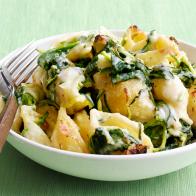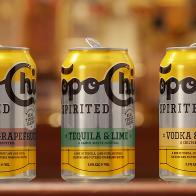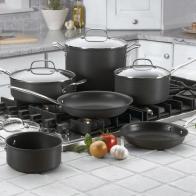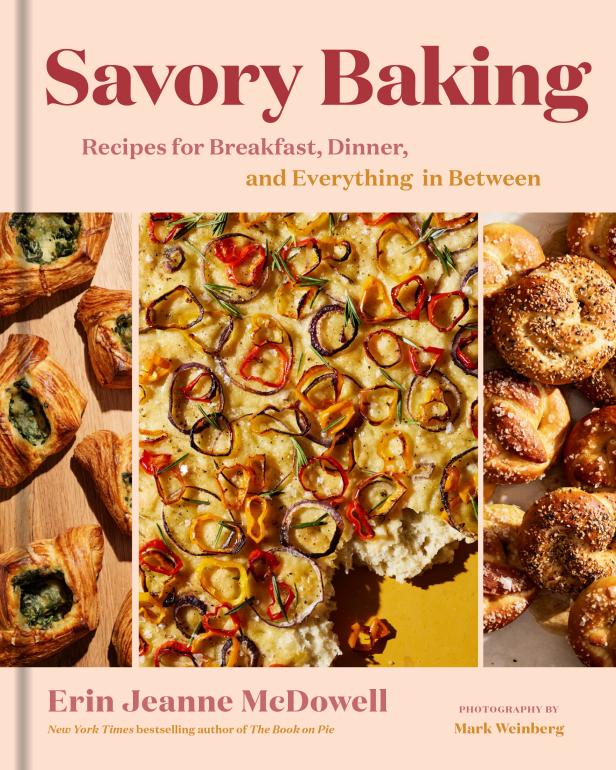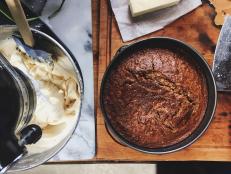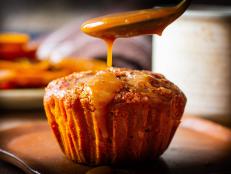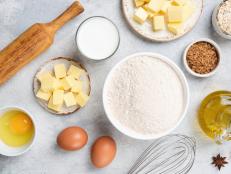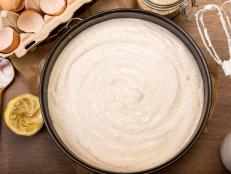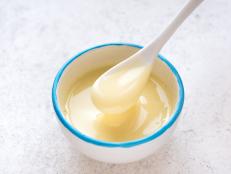It's Impossible Not to Love Runzas, the Stuffed Rolls from My Hometown
Plus my recipe for cheesy broccoli filled runzas.
.gif.rend.hgtvcom.616.493.suffix/1664906220179.gif)
Mark Weinberg / Savory Baking
When I started writing my new cookbook, Savory Baking: Recipes for Breakfast, Dinner, and Everything in Between, I knew right away that runzas would need to be on the recipe list. The book started taking shape when I was still living in NYC-adjacent New Jersey. I loved living there but was often homesick for the Midwest, particularly Kansas, where I grew up.
I know that most folks won’t be familiar with runzas. The savory pastry is adored in a few corners of the Midwest, and really deserves some broader acclaim. I’m not the only one who thinks so. In one passionate conversation with author and fellow Midwesterner Shauna Sever, she and I gushed about runzas for such a long time, the food we’d been eating got cold in front of us. I’m writing this piece because I want you, too, to know what runzas are. Once you do, it’s hard not to love them.
Runzas originate from a few different pastries, namely Russian piroshki and German bierock. Both are made with soft, yeast-raised pastry dough wrapped around some sort of filling. When Germans emigrated to the United States in the 1800s, many settled in the Midwest. The “German triangle” referred to the regions they first moved to in large numbers. They brought many traditions with them, including their beloved pastry recipes. In fact, you’ll see many bakeries making bierock in states like Indiana, Wisconsin, Illinois and Missouri. But runzas are a bit more hyper-local—they are most well-known in Nebraska, where there is even a restaurant chain called RUNZA. The fast-food establishment treats the runza much like a hamburger, offering fries and onion rings alongside. The restaurant has expanded into neighboring states Colorado and Kansas. It was one such restaurant in my hometown Lawrence that gave me my very first taste of runza goodness.
The runza is a bit like an all-in-one burger. It can be made in a variety of shapes, from round or half-moon to square or rectangular. The most common fillings are ground beef, onions, cabbage and sometimes cheese. But newer recipes often mix it up, including other veggies, like mushrooms. Shauna uses kale in her runza recipe, for example, and in my cookbook, I combine broccoli, cheese and béchamel. Whatever filling you choose, know that it has a magical way of seeping into the inner dough a bit, infusing it with deep flavor.
Thinking of the tastes, preferences and wildest doughy dreams of people I love is a never-ending source of inspiration for me. When I was about halfway through making the cookbook, I realized how deeply personal it had become. The pages reflect how I like to bake for the people in my life. There’s undeniably a hefty sprinkling of my Kansas roots scattered throughout the book—and just like the best things that come out of the kitchen, I think you can really taste that extra love baked in. Please enjoy my runza recipe below and spread the word about the beloved midwestern regional treat.
BROCCOLI AND CHEESE RUNZAS
MAKES 9 RUNZAS
DIFFICULTY: MEDIUM
DOUGH
- 290 g / 11/4 cups whole milk
- 600 g / 5 cups all-purpose flour 50 g / 1/4 cup granulated sugar
- 10 g / 1 tablespoon instant dry yeast 6 g / 11/2 teaspoons fine sea salt
- 56 g / 1 large egg, at room temperature
- 21 g / 1 large egg yolk, at room temperature 45 g / 11/2 ounces / 3 tablespoons unsalted butter, at room temperature
FILLING AND FINISHING
- 270 g / 3 packed cups bite-size chopped broccoli
- 120 g / 1/2 cup Thick Béchamel
- 200 g / 2 cups shredded sharp cheddar cheese (about 7 ounces)
- Kosher salt and freshly ground black pepper 45 g / 3 tablespoons Dijon mustard
- Egg Wash
- Make the dough: In a medium saucepan, heat the milk over medium-low heat until it reaches about 110 F/45 C. Remove from the heat.
- In the bowl of a stand mixer fitted with the dough hook, mix the flour, sugar, yeast, and salt on low speed to combine. Add the warm milk, egg, egg yolk, and butter and mix for 4 minutes. Raise the speed to medium and mix until the dough is smooth, about 2 minutes more.
- Transfer the dough to a lightly greased large bowl, cover with plastic wrap, and let rise until visibly puffy, 45 minutes to 1 hour and 15 minutes.
- While the dough rises, blanch the broccoli: Bring a medium pot of salted water to a boil and prepare an ice bath in a medium bowl. Add the broccoli to the boiling water and cook for 1 minute. Drain in a colander, or use a slotted spoon to remove the broccoli from the boiling water, and transfer to the ice bath to stop the cooking.
- When the broccoli is well chilled, use the slotted spoon to transfer it to a medium bowl, draining it well as you lift it from the water. Add the béchamel and cheese and toss well to combine. Season with salt and pepper.
- Turn the dough out and divide it into 9 equal pieces (about 120 g each). Gently round each piece of dough and place on a lightly floured work surface. Cover with a clean kitchen towel and rest for 15 minutes.
- Shape and fill the dough: Line two baking sheets with parchment paper. Working with one piece of dough at a time, gently press and stretch each piece with your fingers to flatten it into a rectangle about 4 x 5 inches/10 x 13 cm (use a rolling pin if you prefer). Scoop about 70 g / heaping 1/4 cup of the filling onto the center of the dough and shape it into a log. Bring the two longer sides of the dough over toward each other, to encase the filling, and pinch the seam in the center firmly to seal. Do the same with the two shorter sides, fully enclosing the filling and pinching the dough well to seal the seam. Pinch the ends of the rectangle firmly to seal. As you shape them, transfer the runzas to the baking sheets, staggering the rows so there is space between them. Then use the palm of your hand to gently flatten each pastry.
- Cover the shaped pastries with greased plastic wrap and let rise for 45 minutes to 1 hour, until the dough is lightly puffy. Toward the end of rise time, preheat the oven to 350 F/175 C with the racks in the upper and lower thirds.
- Uncover the pastries, and egg-wash the surface evenly. Bake until the pastries are evenly golden brown, 25 to 30 minutes.
- Let the pastries cool for 5 to 10 minutes before serving warm.
Variations
CHEESEBURGER RUNZAS Omit the broccoli, mustard, and béchamel sauce and make the following filling: In a large skillet, heat 15 g / 1 tablespoon extra virgin olive oil and 14 g / 1 tablespoon unsalted butter over medium heat until the butter melts. Add 295 g / 21/2 packed cups shredded cabbage and cook, stirring frequently, until it wilts, about 10 minutes. Add 325 g / 1 large sweet onion, thinly sliced, and cook until the vegetables are very tender, 8 to 10 minutes. Transfer the mixture to a medium bowl. Heat another 15 g / 1 tablespoon extra virgin olive oil in the same pan and add 340 g / 12 ounces ground beef, along with 9 g / 1 tablespoon onion powder, 15 g / 1 tablespoon Worcestershire sauce, 3 g / 1 teaspoon garlic powder, 3 g /1 teaspoon smoked paprika, and salt and pepper to taste. Cook until the beef is evenly browned, 4 to 5 minutes, then add it to the bowl with the cabbage and cool for 10 minutes. Fold the shredded cheddar cheese into the mixture. Shape and fill the dough as runzas, as in step 8, and let rise. Egg-wash and bake as directed.
VEGGIE CHILI RUNZAS Omit the broccoli, mustard, and béchamel sauce and use 500 g / 2 cups of your favorite veggie chili for the filling. Fold the cheese into the chili, if desired, or leave it out. Shape and fill the dough as runzas, as in step 8, and let rise. Egg-wash and baked as directed. This also works well with any thick stew or braise, vegetarian or not.
Excerpted from Savory Baking: Recipes for Breakfast, Dinner, and Everything in Between 2022 by Erin Jeanne McDowell. Photography 2022 Mark Weinberg. Reproduced by permission of Harvest, an imprint of HarperCollins Publishers. All rights reserved.
Related Links:




